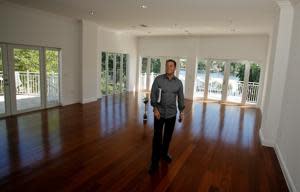 The Lookout
The LookoutA tale of two recoveries: Why jobs and growth still lag

Today's abysmal jobs numbers--the second straight month of anemic employment growth--make clear that the current recovery from the recession that began in late 2007 is one of the weakest on record. So why is it that two full years after the economy officially emerged from recession jobs and GDP growth are still so slow, and even President Obama is admitting that "we have a long way to go"?
To answer that question, it's useful to compare this recovery to the last one that followed a severe recession, which was in the early 1980s. As the numbers make clear, it doesn't fare too well. Call it a tale of two recoveries.
First, the unemployment rate has been much slower to fall this time around. When the early '80s recession ended in late 1982, the jobless rate was close to 11 percent. But in the ensuing two years, it dropped quickly. By November 1984, it was down to 7.2 percent.
By contrast, when the current recovery officially began in July 2009, the jobless rate was at 9.6 percent. Two years into the recovery, it's still at 9.2 percent--not much of a decline at all.
GDP growth tells a similar story. Last time around, in the seven quarters following the end of the recession, GDP growth increased at an average rate of a roaring 7.1 percent. This time, that figure is just 2.8 percent--not nearly high enough to produce the number of new jobs that would start to bring down the jobless rate. And in the first quarter of this year, GDP growth was just 1.8 percent.
(These two charts convey the essential point.)
Why the difference in the strength of the two recoveries? Gary Burtless, a senior economist at the Brookings Institution, points to several factors.
First, Burtless told The Lookout, in the early '80s, the Federal Reserve was able to quickly stimulate growth by sharply lowering interest rates, which had been quite high to control inflation. The reduction in rates made it easier for businesses and consumers to borrow money, immediately triggered a rebound in construction and other sectors, which helped to sustain the recovery.
But this time around, interest rates were already quite low when the recession hit, and are now at zero. So the Fed can't get them any lower.
Equally important, Burtless said, is the housing market. The housing bust of 2007-08 badly damaged the balance sheets of a lot of middle-class families, who had most of their wealth tied up in their homes. And thanks to a glut of inventory left over from over-building in the boom years, home prices have scarcely recovered since then. That, said Burtless, "has acted as a heavy weight on consumption for middle-income families."
By contrast, the period before the early '80s recession produced no over-supply in the housing market, so there was no comparable decline in home prices. That left middle-income households in a better position to start spending again.
Burtless also pointed to the Reagan tax cuts of 1981, and to increased defense spending, both of which, he said, acted as "Keynesian stimulus" on the economy, by goosing demand. True, there have been tax cuts and government spending this time around too, but clearly, they haven't been enough to counteract the effects of the housing bust.
Finally, Burtless pointed to a factor that doesn't get much attention: increased productivity. Because workers today produce more than they did 30 years ago, the same amount of economic growth can be achieved with fewer workers. As we've written before, that's kept unemployment higher than what they would be even in a slow-growth recovery.
